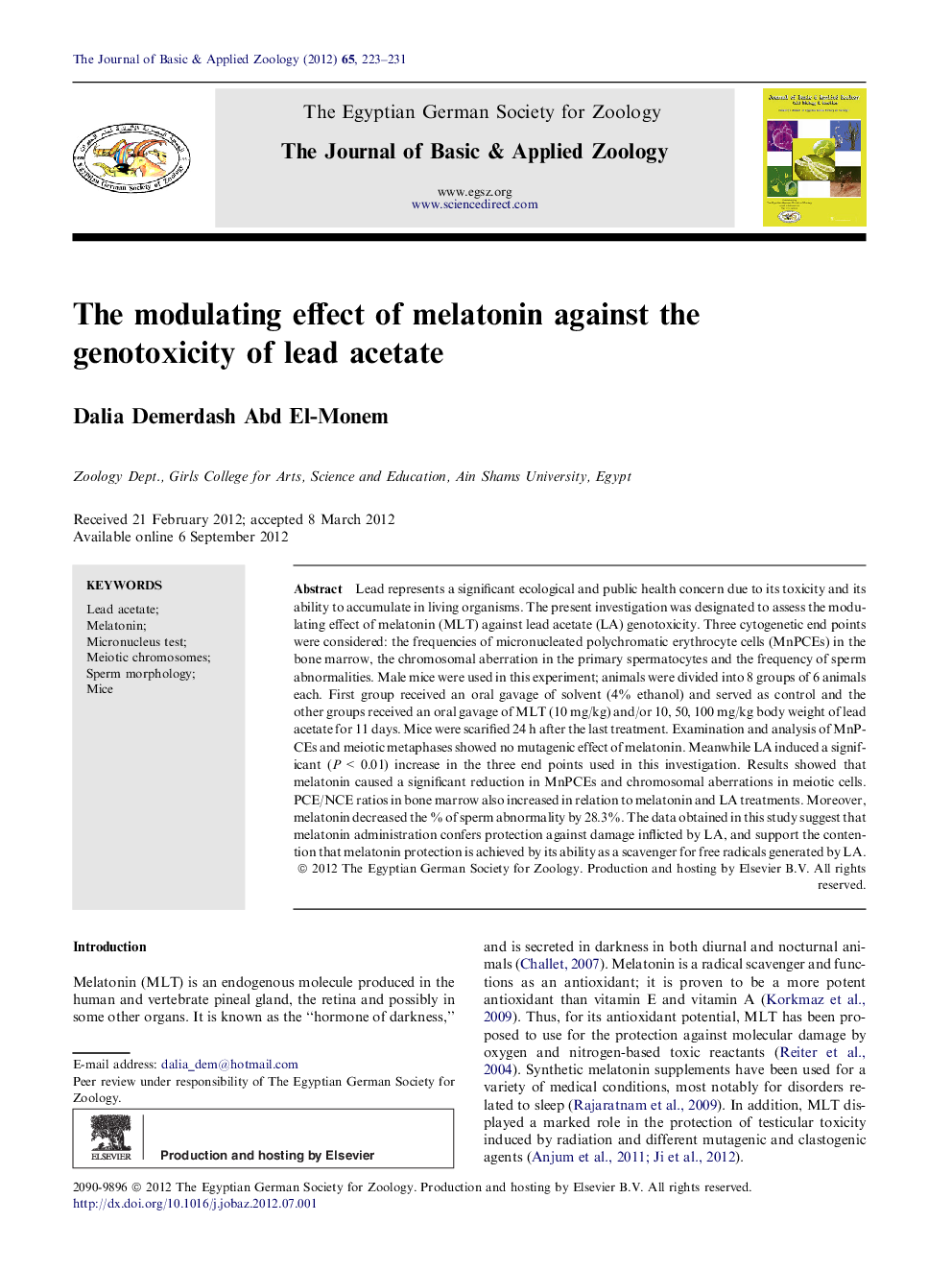| Article ID | Journal | Published Year | Pages | File Type |
|---|---|---|---|---|
| 4493552 | The Journal of Basic & Applied Zoology | 2012 | 9 Pages |
Lead represents a significant ecological and public health concern due to its toxicity and its ability to accumulate in living organisms. The present investigation was designated to assess the modulating effect of melatonin (MLT) against lead acetate (LA) genotoxicity. Three cytogenetic end points were considered: the frequencies of micronucleated polychromatic erythrocyte cells (MnPCEs) in the bone marrow, the chromosomal aberration in the primary spermatocytes and the frequency of sperm abnormalities. Male mice were used in this experiment; animals were divided into 8 groups of 6 animals each. First group received an oral gavage of solvent (4% ethanol) and served as control and the other groups received an oral gavage of MLT (10 mg/kg) and/or 10, 50, 100 mg/kg body weight of lead acetate for 11 days. Mice were scarified 24 h after the last treatment. Examination and analysis of MnPCEs and meiotic metaphases showed no mutagenic effect of melatonin. Meanwhile LA induced a significant (P < 0.01) increase in the three end points used in this investigation. Results showed that melatonin caused a significant reduction in MnPCEs and chromosomal aberrations in meiotic cells. PCE/NCE ratios in bone marrow also increased in relation to melatonin and LA treatments. Moreover, melatonin decreased the % of sperm abnormality by 28.3%. The data obtained in this study suggest that melatonin administration confers protection against damage inflicted by LA, and support the contention that melatonin protection is achieved by its ability as a scavenger for free radicals generated by LA.
